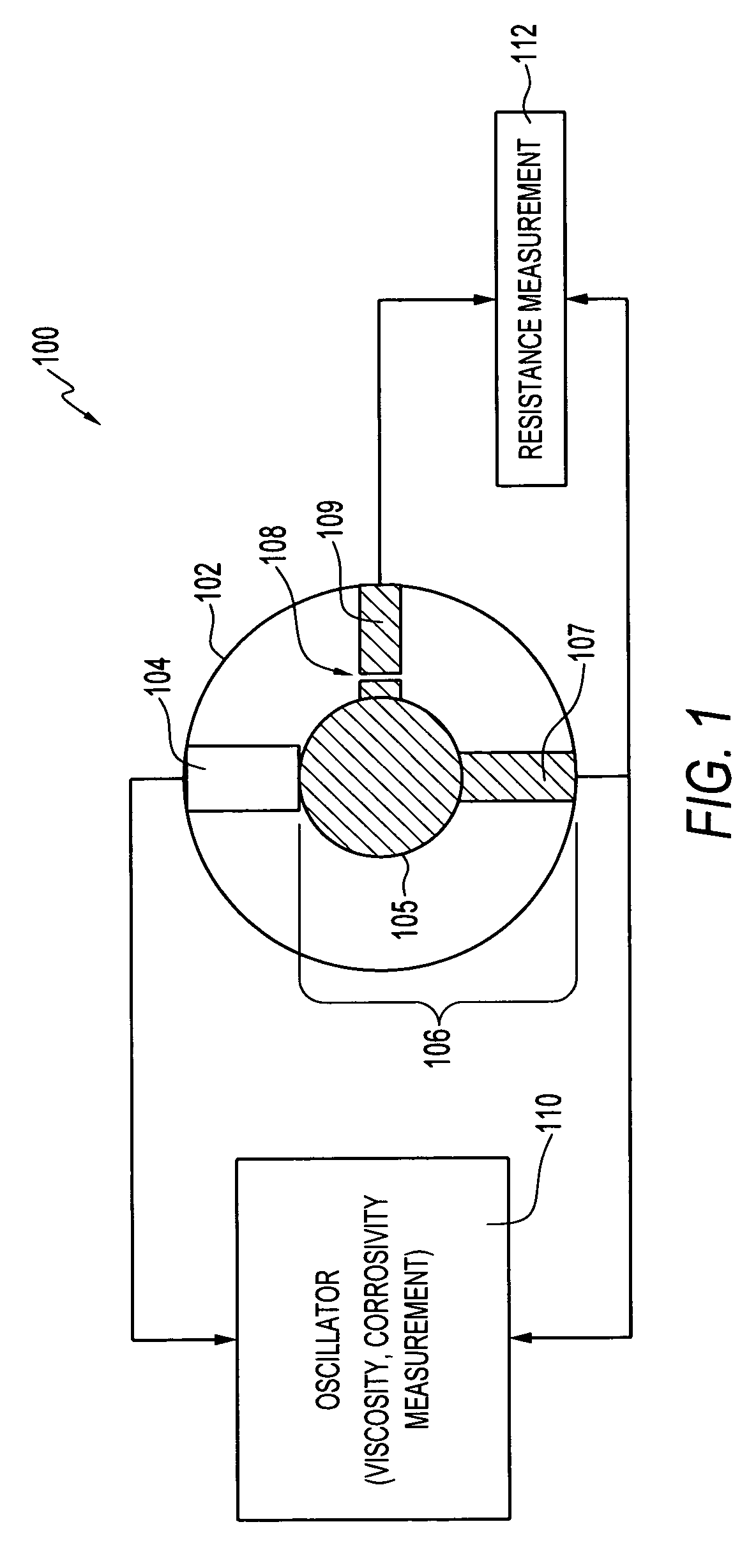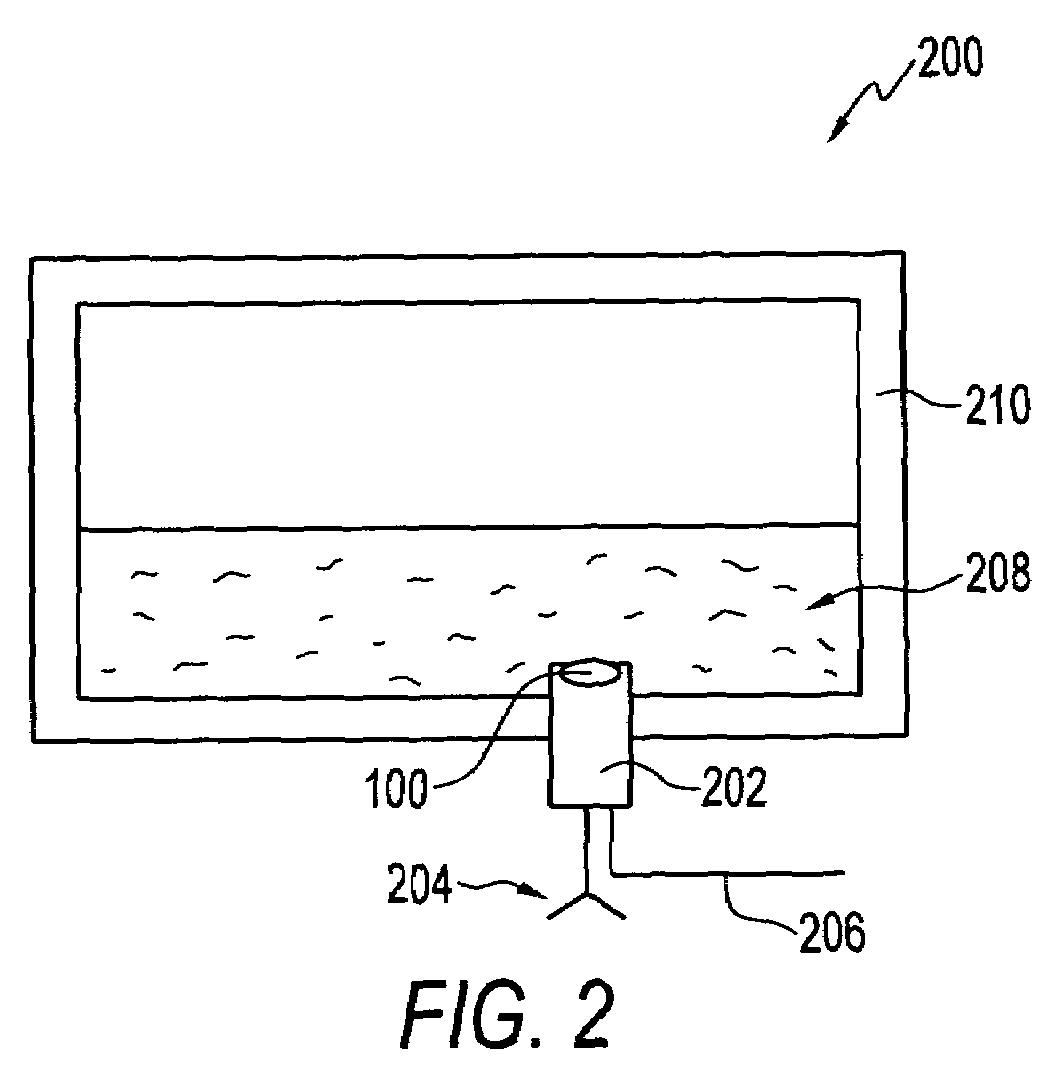Engine wear and oil quality sensor
a technology for oil quality sensors and engine components, applied in the field of sensing devices, can solve the problems of filtering only solid particles above a certain size, increasing the mass loading of saw sensors, and no longer providing the desired degree of protection for engine components
- Summary
- Abstract
- Description
- Claims
- Application Information
AI Technical Summary
Benefits of technology
Problems solved by technology
Method used
Image
Examples
Embodiment Construction
[0033]The particular values and configurations discussed in these non-limiting examples can be varied and are cited merely to illustrate at least one embodiment of the present invention and are not intended to limit the scope of the invention.
[0034]FIG. 1 illustrates a schematic diagram of a viscosity and corrosivity sensor apparatus 100 that can be implemented in accordance with a preferred embodiment. The viscosity and corrosivity sensor apparatus 100 generally includes a substrate 102 upon which one or more electrodes 104, 106 can be configured. Note that electrode 106 is generally composed of one or more electrode portions 105, 107, and 109. Electrode 104 functions as a bottom electrode and electrode 106 functions as a top electrode. A resistance measurement component 112 is connected to the electrode portion 109 of the top electrode 106, while an oscillator 110 is connected to the bottom electrode 104 and the resistance measurement component 112. The viscosity and corrosivity s...
PUM
| Property | Measurement | Unit |
|---|---|---|
| time | aaaaa | aaaaa |
| viscosity | aaaaa | aaaaa |
| resistance | aaaaa | aaaaa |
Abstract
Description
Claims
Application Information
 Login to View More
Login to View More - R&D
- Intellectual Property
- Life Sciences
- Materials
- Tech Scout
- Unparalleled Data Quality
- Higher Quality Content
- 60% Fewer Hallucinations
Browse by: Latest US Patents, China's latest patents, Technical Efficacy Thesaurus, Application Domain, Technology Topic, Popular Technical Reports.
© 2025 PatSnap. All rights reserved.Legal|Privacy policy|Modern Slavery Act Transparency Statement|Sitemap|About US| Contact US: help@patsnap.com



